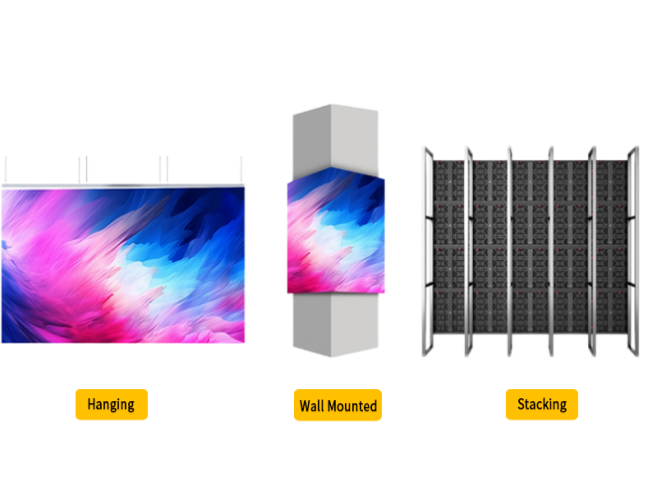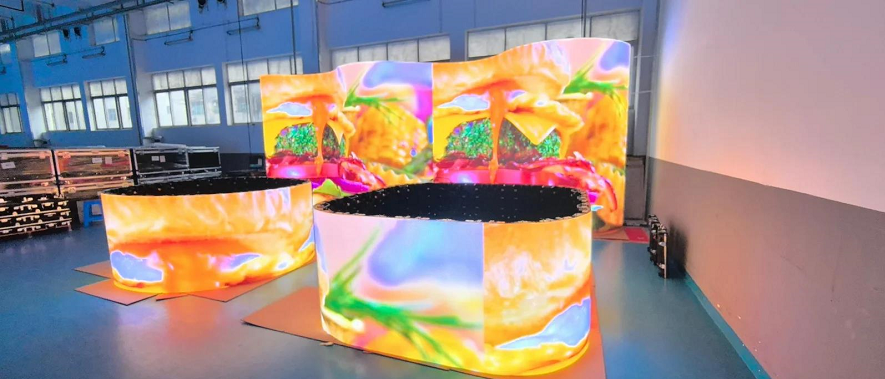Discover expert insights on LED display projects, product selection, and display technology — all in one place. Our resource center brings together real-world case studies, professional buying guides, and in-depth technical knowledge to help you make the right decisions for your LED screen needs. More industry focused content, including installation best practices and market trends, is continuously curated to support your long-term success.
LED Screen Rental Prices in 2025: Why Do They Jump 3x? (12 Factors to Cut Costs by 40%)
Published: 2025-07-12 | Last Updated: 2025-07-15 | Author: Vanxled Market Team
────────────────────────────────────────────────────────────────────────────────────────────────
Here’s a surprising fact: In 2025, the one day rental price for the same 50㎡ LED screen can range from 1,100 to 3,400—a 300% difference that leaves event planners scratching their heads.
This guide is designed to demystify the pricing chaos, breaking down 12 critical factors that shape costs, from screen size and pixel pitch to location logistics and seasonal demand. But the question you’re really asking is: With so many variables at play, how can you slash rental expenses by 40% without compromising on display quality? Let’s dive in to find out.
Table of Contents
1. Rental LED Screen Size and Resolution
2. Indoor vs Outdoor LED Rental Screens
3. Pixel Pitch and Image Quality of rental led display
4. Rental Duration
5. Location and Logistics
6. Installation and Setup Services
7. Type of Event and Viewing Distance
8. Screen Configuration: Flat, Curved, or Creative
9. Equipment Brand and Panel Quality
10. Real-Time Control Systems and Software
11. Maintenance and On-Site Support
12. Seasonal Demand and Booking Time
1. Screen Size and Resolution
The most obvious factor in cost is the physical size of the LED screen. A larger screen requires more panels, more power, and more labor to set up. Resolution plays a big role too: a 4K LED wall will cost more than a standard HD screen of the same size, due to higher pixel density and processing demands.
Image suggestion: Diagram comparing different screen sizes and resolution (HD vs 4K)→Update later
2. Indoor vs Outdoor LED rental display
Outdoor LED rental display are designed to be weather-resistant, brighter, and more durable features that naturally increase their cost. Indoor rental LED displays, while typically more affordable, don’t require the same IP65+ rating or ultra-high brightness levels.
Image suggestion: Side-by-side image of an indoor event vs an outdoor concert with LED screens
Placement: Mid-section of this chapter. →Update later
3. Pixel Pitch and Image Quality
Pixel pitch refers to the distance between pixels. The smaller the pitch (e.g., P2.5), the higher the resolution and cost. If your audience is close to the screen, a finer pitch ensures better clarity. For distant viewing, a coarser pitch like P3.91 may suffice at a lower price.
4. Rental Duration
Renting for one night versus a week can result in a significant price difference. Most companies offer discounted weekly or monthly rates compared to daily rentals. However, longer rental periods also include more wear-and-tear considerations for the vendor.
5. Location and Logistics
The farther your event is from the vendor’s base, the higher the transportation and logistics costs. Events held in busy city centers or remote locations may also require special permits or handling, which adds to the overall pricing.
6. Installation and Setup Services
Professional setup and teardown are typically included in full-service rentals, but complexity affects the labor cost. Events with tight schedules, hanging trusses, or stage integration require more experienced crews and specialized rigging tools.

7. Type of Event and Viewing Distance
Different events call for different configurations. A concert LED wall will need higher brightness and contrast to be seen in daylight, whereas a corporate meeting screen may prioritize pixel density over brightness. Viewing distance determines how much detail the screen needs to show.
8. Screen Configuration: Flat, Curved, or Creative Shapes
Flat screens are the most common and cost-efficient. But curved or custom-shaped LED walls add visual impact—and complexity. These setups often involve special brackets, flexible modules, and custom content mapping, all of which increase rental costs.


9. Rental LED Panel Quality
Not all rental LED panels are created equal. Use high quality material . Using high-quality rental LED panel materials typically results in a higher cost. Raw materials are generally categorized into high-end, mid-range, and low-end grades. While high-end materials are more expensive, they deliver better color accuracy, refresh rates, and durability.
10. Real-Time Control Systems and Software
Behind every rental LED screen is a control system that manages playback, resolution scaling, and real-time switching. Advanced systems like Novastar or Colorlight add to the rental price but ensure smooth operation, especially for live events or dynamic content changes.
11. Maintenance and On-Site Support
Live events are unpredictable. Having a technician on-site for immediate troubleshooting can prevent show-stopping problems. Some rental packages include support, others charge extra especially for overnight or multi-day events.
12. Seasonal Demand and Booking Time
Pricing can fluctuate based on event seasons. Demand spikes during holidays, summer festivals, and conference periods, leading to premium rates. Booking early not only secures availability but can also unlock early-bird discounts.
[Contact Us Today for a Free Quote via Contact Icon]
Let our team help you find the right screen at the right price. Whether you need a simple indoor setup or a multi-screen outdoor display, we’re here to help.
13. FAQs: LED Rental Pricing Questions Answered
Q1: What’s the average cost of renting a 3x2m indoor LED screen for one day?
A: Depending on the pixel pitch and city, expect prices between $500–$1,200 for full service.
Q2: Is transportation included in LED rental prices?
A: Not always. Many companies separate delivery, setup, and teardown fees, especially for long-distance jobs.
Q3: Can I rent LED screens for long-term installations (e.g., 1–3 months)?
A: Yes. Long-term rentals often come with custom pricing and optional service agreements.
Q4: Do I need to hire a separate technician?
A: Most full-service rentals include on-site support, but it’s worth confirming in your quote.
Q5: How far in advance should I book?
A: Ideally, 2 month ahead—especially during busy seasons like summer or year-end holidays.
Consulting solutions for Your Project

 Whatsapp Business:008613823234994
Whatsapp Business:008613823234994 E-mail: info@vanxled.com
E-mail: info@vanxled.com Subscribe
Subscribe















 Address: Block1, Jiada Industrial Park, the northern section of Tangtou Avenue, Shiyan Street, Bao‘an District, Shenzhen, China
Address: Block1, Jiada Industrial Park, the northern section of Tangtou Avenue, Shiyan Street, Bao‘an District, Shenzhen, China Phone: 008613823234994
Phone: 008613823234994 Email: info@vanxled.com
Email: info@vanxled.com

